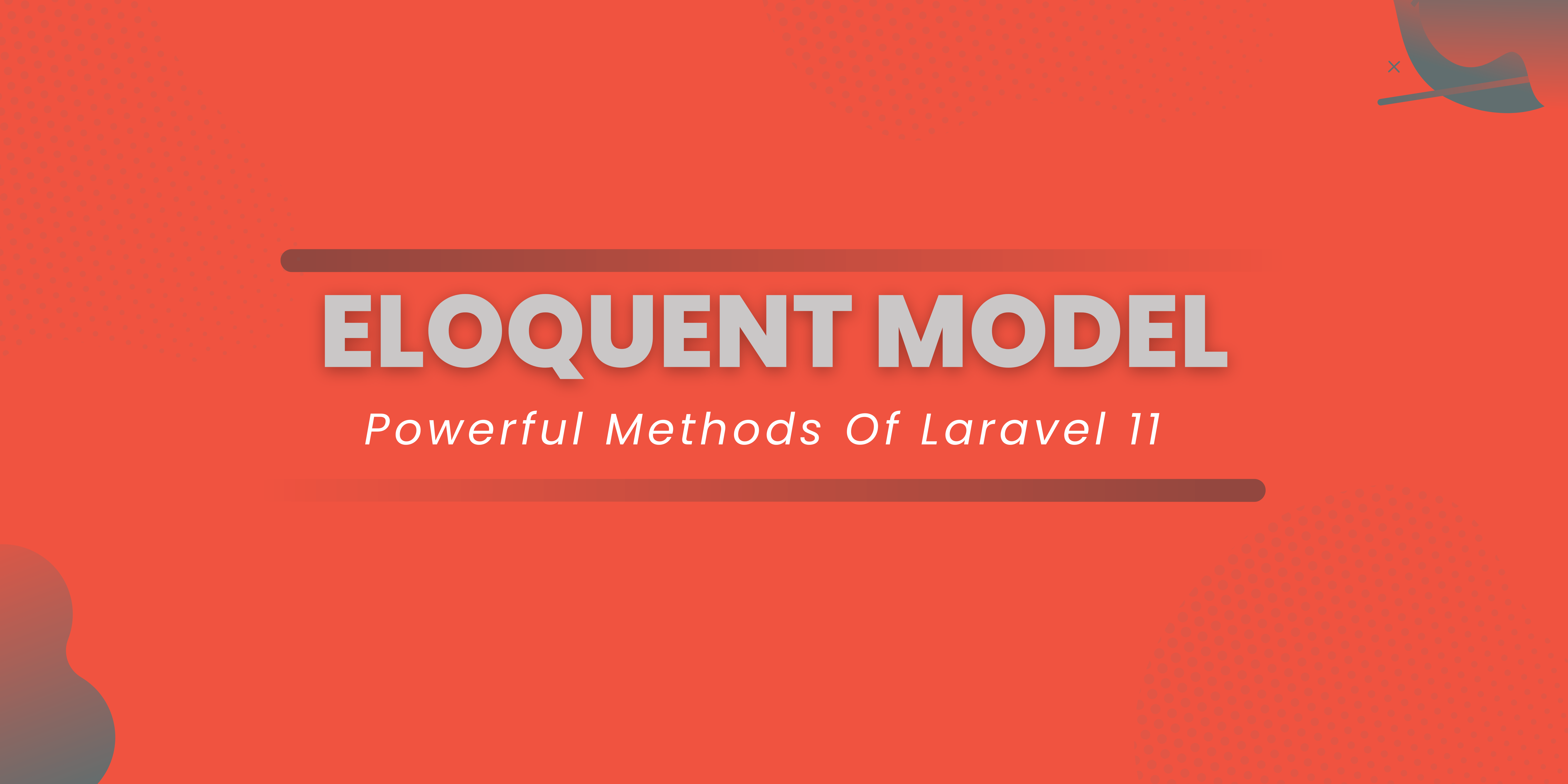Eloquent Model Hidden Gems: Powerful Methods of Laravel 11
Laravel’s Eloquent ORM is renowned for its elegant syntax and powerful features that make database interactions seamless. With the release of Laravel 11, several hidden gems have been introduced or improved, offering developers even more robust tools for their data manipulation arsenal. In this blog post, we’ll explore some of these lesser-known yet powerful methods, […]

Laravel’s Eloquent ORM is renowned for its elegant syntax and powerful features that make database interactions seamless. With the release of Laravel 11, several hidden gems have been introduced or improved, offering developers even more robust tools for their data manipulation arsenal. In this blog post, we’ll explore some of these lesser-known yet powerful methods, complete with examples to help you understand and utilize them in your projects.
firstWhere()
The firstWhere method is a convenient shortcut to retrieve the first model that meets a given condition without having to chain multiple methods.
// Retrieve the first user with an active status
$user = User::firstWhere('active', 1);
echo $user->name;This method simplifies the code and improves readability when you’re only interested in the first record that matches your criteria.
sole()
The sole method takes the expectations up a notch. It retrieves a single model that matches the query criteria, but if no records or more than one record are found, it throws an exception.
// Retrieve a unique user by email or fail
$user = User::where('email', 'unique@example.com')->sole();
echo $user->name;This method is perfect when you’re confident there’s only one record that should match your query, and you want to enforce this at the query level.
soleValue()
When you’re interested in a single value of a model, soleValue comes to the rescue. It retrieves a single column’s value from the first model that matches the query, and like sole, it throws an exception if the conditions are not met.
// Get the email of the unique user or fail
$email = User::where('name', 'Unique User')->soleValue('email');This method is a great way to directly access a specific value without loading the entire model.
Hydrate()
The hydrate method allows you to create an array of Eloquent models from plain PHP arrays. It’s particularly useful when dealing with raw data from external sources.
$usersArray = [
['name' => 'Alice', 'email' => 'alice@example.com'],
['name' => 'Bob', 'email' => 'bob@example.com']
];
$users = User::hydrate($usersArray);
With hydrate, you can treat any array of data as Eloquent models, leveraging all the features of the ORM.
Cursor()
The cursor method is a game-changer for working with large datasets. It allows you to iterate through your database records using a cursor, which only loads one Eloquent model into memory at a time.
foreach (User::where('active', 1)->cursor() as $user) {
echo $user->name;
}This method is incredibly memory-efficient and is ideal for processing large amounts of data without overwhelming your server’s memory.
Upsert()
Last but not least, upsert is a bulk operation method that can insert or update records efficiently. It’s a powerful way to handle large datasets where you need to ensure the uniqueness of records based on certain attributes.
User::upsert([
['id' => 1, 'name' => 'Alice', 'votes' => 5],
['id' => 2, 'name' => 'Bob', 'votes' => 3],
], ['id'], ['votes']);
In this example, upsert will update the votes column for users with id 1 and 2, or insert the records if they don’t exist.
These methods are just a few of the treasures hidden within Laravel 11’s Eloquent ORM. By incorporating them into your toolkit, you can write more efficient, readable, and robust code. Embrace these hidden gems, and watch your Laravel applications shine!
I hope this blog post provides a clear understanding of some of the powerful methods available in Laravel 11’s Eloquent ORM. Happy coding!

![How to Fix: “SQLSTATE[42000]: Specified key was too long; max key length is 1000 bytes” in Laravel Migration (MySQL)](https://ghanshyamashra.online/wp-content/uploads/2025/04/learn-to-fix-specified-key-was-too-long-mysql-laravell0SQLSTATE42000-1071-300x300.jpg)



